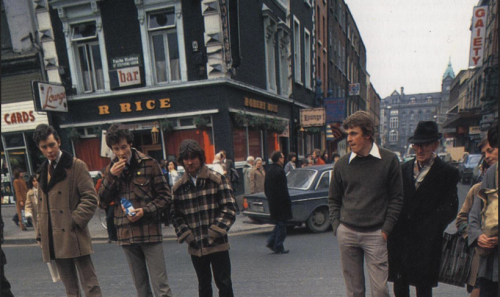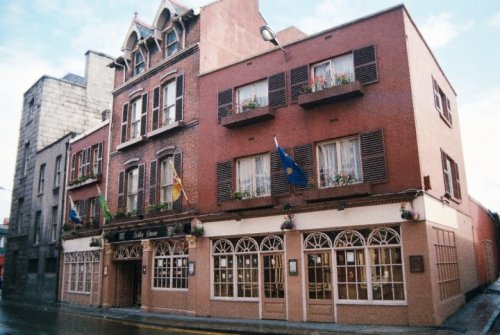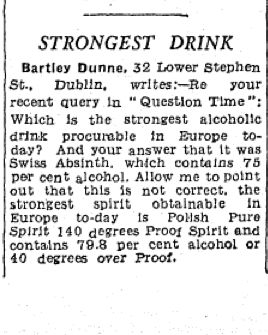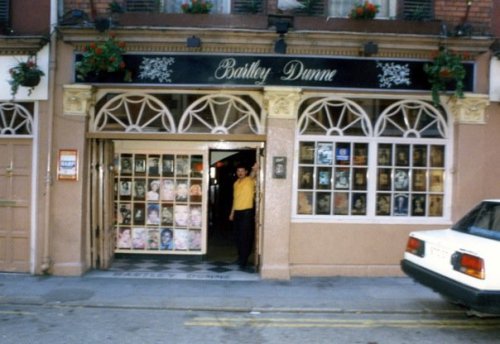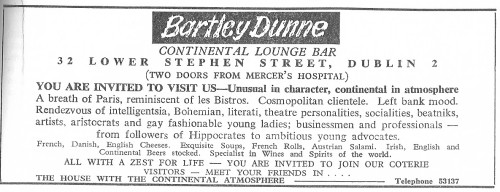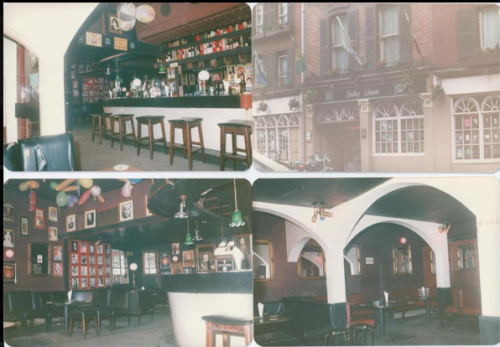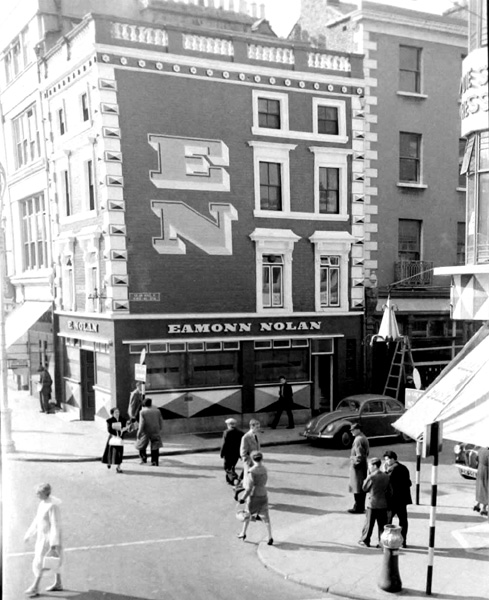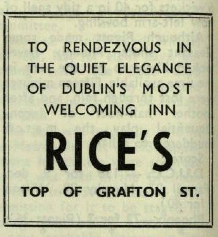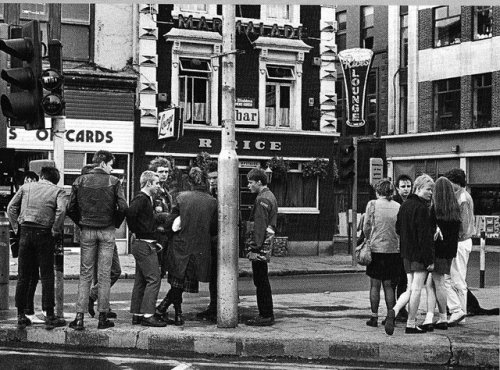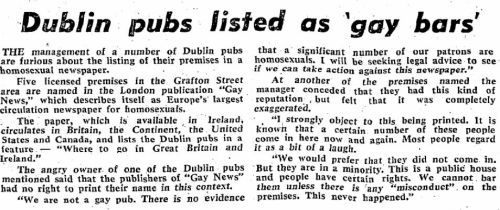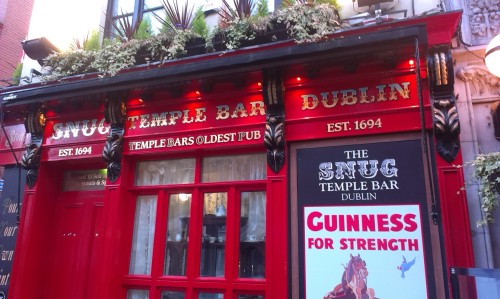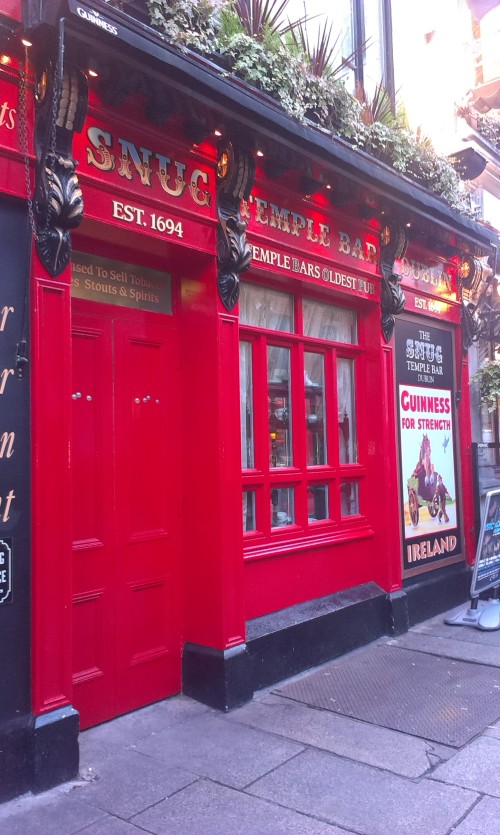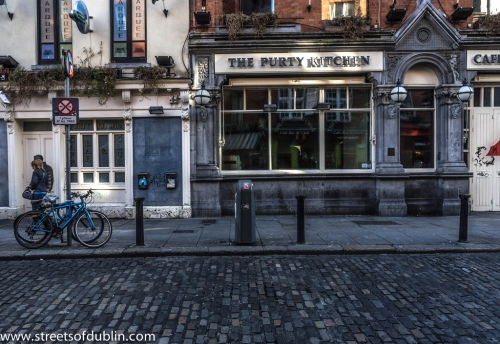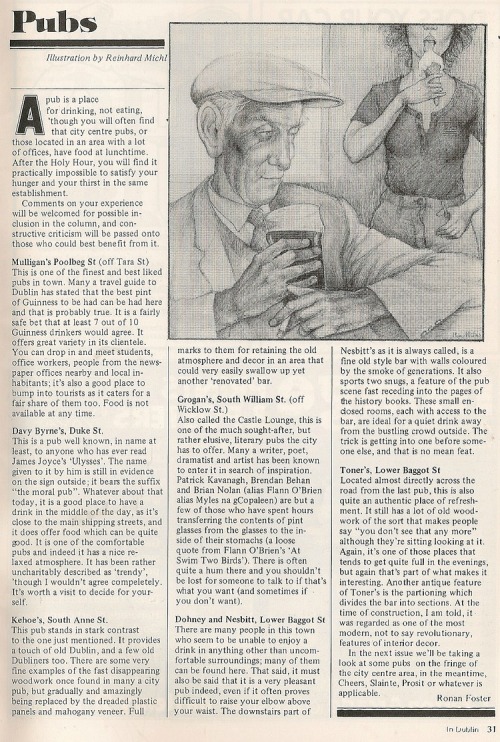Revolutionary Struggle (RS) were a small militant Marxist group active from c.1975 to c.1984. They were mainly Dublin-based, particularly Trinity College, with some members scattered around the country. Heavily influenced by Italian armed groups like Prima Linea and the Red Brigades and the Tupamaros Uruguayan urban guerrillas, the group maintained and promoted a reputation for secrecy. Poster ‘SonofStan’ on Cedar Lounge Revolution wrote back in August 2009:
I was an undergraduate in TCD during the late ’70s and RS were a shadowy presence, credited as a huge but secretive influence behind student politics in the college. Certain student union officers, now nationally prominent, were held to be either secret members or to have been elected as ‘RS’ approved candidates.
They produced a journal called Rebel (1978 – 1985) and were heavily involved in the production of 13 issues of a quarterly political and theoretical journal called The Ripening of Time (1976-1980). It was widely respected in political circles for its rigorous Marxist analysis of the Troubles and Irish economic and social life. In 1976, the name given as editor was M. McBride and the journal had an address at 5 Henrietta Street, Dublin. By 1980 both Rebel and The Ripening of Time were using the same accommodation address – PO Box 1103, 29 Mountjoy Square, Dublin 1 and the same ‘editor’ M. McBride.
RS are best known for their alleged involvement in the shooting of a British businessman in Trinity College in March 1981 and for their quasi-mysterious leader who went by the nom de guerre of ‘Mick the Greek’, incorrectly sometimes referred to as ‘Nick the Greek’.
In their first mention in the broadsheets (Irish Times, 17 Dec 1975), RS were named as one of eight organisations who planned to picket Leinster House against the introduction of the Criminal Law Bill. The other groups were the Dublin Shop Stewards Committee, the Irish Civil Rights Association, the League for a Workers Republic, People’s Democracy, the Revolutionary Marxist Group, the Socialist Workers’ Movement and Women Against Imperialism.
Around this time, the group formed a working relationship with Peoples Democracy and produced a pamphlet on the threat of a Loyalist fascist takeover in the North. The two groups fell out about 1976.
In the 2nd of October 1977 issue of Magill magazine, they were described as a group of ‘New Leftists … following Marcuse, Poulantzis etc.’ with an address at 51 Carysfort Avenue, Blackrock, Co. Dublin.
In November 1977, RS and the Internationalists (CPI-ML) successfully disrupted and shut down a meeting of the recently-formed Wargamers Association of Trinity College whose first guest speaker was the United States military attache, Colonel Beeres, who was due to speak on the role of the North Atlantic Treaty Organisation (NATO) in Europe. The Irish Times (9 November 1977) reported that activists with the Peace and Disarmament Committee handed out leaflets while RS and other militant students ‘pushed, kicked (and) shouted’ to stop the meeting.
Trinity Student Union President Ian Wilson criticised RS, who he called ‘ultra-leftists’, in February 1978 after their members led a campaign for students to only pay 30p for a four course lunch instead of the normal charge of 75p to 80p. As reported in the Irish Press (17 February 1978), RS members refused to pay ‘more than what they considered reasonable to their income and the quality of the food’. Wilson said: ‘We have good relations with staff unions and this kind of thing messes (things) up … These students are gong the wrong way about the matter’.
In July 1979, RS were described as a ‘revolutionary element’ who had infiltrated the anti-nuclear/environmental movement in order to use it ‘as a front for an anti-State campaign’. Speaking to the Irish Press (9 July 1979), Brendan Howlin (now a Labour Party TD and currently Minister for Public Expenditure and Reform ) of the Nuclear Safety Association said: ‘We want to make it clear that our aims are non-political and that these people do not represent us’.

RS logo and slogan. Taken from ‘Revolutionary Struggle: Ireland the Class War and Our Tasks. (Dublin, 1977) ‘. Credit – Dublin Opinion
Joe Duffy, broadcaster and former Trinity College Student Union President (1979/80), mentioned the group in his autobiography:
One political group on campus was called Revolutionary Struggle, or RS, as we knew them. Their banner appeared at a few of our demos. They were led by a mysterious figure, Mick the Greek, who looked disturbingly like Demis Roussos … When I first met him, I instantly disliked (him) mainly because he began by praising my leadership of the Trinity students and my campaign to ‘bring down Trinity College’ … I immediately mistrusted him – and decided in my conspiratorial head that he was probably the archetypal CIA agent, operating as an agent provocateur!
This unsubstantiated claim about ‘Mick the Greek” has been brought up on Indymedia and other internet forums before.
In the early 1980s, RS members were involved in the setting up of the Dublin Resource Centre (DRC) at 6 Crow Street in Temple Bar. This centre was home to a number of co-operatives including a left-wing radical bookshop, a vegetarian restaurant (Well Fed Cafe) and a printing co-op.
Some of their other activity was far less legal. Sources linked them to the burning of several CIE buses and the wrecking of a McDonalds in 1980/1981. This claim was repeated in the Irish Press (5 April 1981) and the latter event confirmed by Michael Youlton (‘Mick the Greek’) in an interview with a German electronic newspaper ‘Schattenblick’ in February 2011:
In 1981 in the center of Dublin, a great anti-tax demonstration was attended by several hundred thousand people. As the protesters passed O’Connell Street about a hundred of our people separated from the crowd, walked into the local branch of McDonald’s, which had just been on strike at that time because the company refused the right for its employees to organize in unions, and they took the place apart in about seven or eight minutes . After the action, we dived back into marching crowd. Such were the actions that we have taken: violent protests against personal property, but never against people.
(Note: I slightly edited the translation from Google to make it more readable.)
Youlton also revealed that the group had cells in Britain and France. He said that RS followed three principles which he respected:
Firstly, it was not an exclusively Irish organization. There were three to four cells in the UK and a few in France. We were active internationally right from the start. As for the ideological background, our models were the Tupamaros, a guerrilla movement in Uruguay.
Secondly, we were of the view that the political organizations of the left in all countries … should be allowed, if necessary, to use violence against the state and capital. We therefore represented a political and militant attitude. Within the period in question there were a number of violent or extrajudicial incidents that have been brought to justice or injustice with us.
Thirdly, we had agreed among themselves, regardless of what extra legal action was planned, to never claim credit for it .
The group also hinted heavily in Rebel that they had some involvement with attacks on prison officers homes in the same period. Their literature was certainly supportive of the armed struggle with ‘Nationalise the War’ being their most famous slogan.
One known RS member was given a two-year suspended sentence in 1983 for his involvement in the 1981 H-Block British Embassy riot in Dublin. The activist was photographed with a piece of wood in his hand and then throwing what appeared to be a brick.
As such, it is possible to see a build-up in language and actions in the run up to the Trinity shooting.
On 24 March 1981, three masked man burst into the packed Dublin Chamber of Commerce lecture hall at Trinity College. Here Geoffrey Armstrong, the chairman of British vehicle-manufacturing company British Leyland and director of the Confederation of British Industry, was giving a lecture on ‘Managing Change in an Uncertain Climate’.
One of the armed men shouted ‘Everybody freeze, nobody move! This action is in support of the H-Blocks’ and then shot Armstrong three times in the legs. He was taken to Meath Hospital for an emergency operation and was allowed back to England the following day. He spent 10 days in hospital in England and returned to work six weeks later when he could walk with aid of two sticks.
The Provisional IRA immediately denied any involvement while the National H-Block Committee said that ‘the action … (was) in contrast to their policy as an open, peaceful and democratic movement in solidarity with the prisoners’ five demands’.
Police sources initially blamed the Irish National Liberation Army (INLA) for the shooting. However on the 9th of April Professor Paul Wilkinson, of the Politics Department at Aberdeen University, named RS in the Daily Mail as the ‘little known leftist group’ who were responsible for the shooting. He also said that the group had links to the Italian Red Brigade and that former members of this group may have been involved in the attack.
Speaking to The Irish Times on 17th April, a Garda spokesman said it was ‘highly unlikely that a Red Brigades cell’ was responsible for the shooting but admitted that they were ‘keeping an open mind’. Trinity Security Officer, Captain John Martin, confirmed to journalist John Armstrong that a ‘Red-Brigades type group’ (i.e. RS) was active in the university two years ago.
Aberdeen University professor Paul Wilkinson expanded on his theory saying that the shooting was the work of ‘disaffected members of the Republican movement’ with contacts with Marxist revolutionary cells in western Europe:
I don’t think the group is still based in TCD but it includes former members of the Trinity cell. I think we’ll see more of them. Their targets are likely to be symbols of capitalism, representatives of multi-national companies…
In response, Trinity Student Union President Eoin Scott told the Irish Press (15 April 1981) that there ‘was a group called RS, an anarchist group, operating (in Trinity) about two years ago but they died out when (their) more prominent members … left college’. He said that while it is probable but ‘highly unlikely’ that one of this group was involved in the attack - it was false to suggest that ‘Red Bridgade group’ were currently operating out of the university.
In May 1981, members of the Trinity Friends of the Earth sued the Irish Press and RTE for defamation after both news agencies accused RS of ‘being responsible’ for the occupation of the EEC offices in Dublin in November 1979. These five activists with the Trinity Friends of the Earth, who were behind this peaceful ‘act of civil disobedience’, were named at the time in the media and they sought to clear their names from being in anyway associated with RS.
On 31st August 1982, a young Italian was arrested on the Sandyford Road and taken into custody under Section 30 of the Offences Against the State Act in connection with an armed robbery at Churchtown Road.
Giovanni Maritonni (27), a native of Florence with an address at South Docks Street, Ringsend was then charged in the Special Criminal Court with the shooting and wounding of Geoffrey Armstrong.
It transpired that Maritonni was wanted by the Italian police and had been sentenced to eight-and-a-half years in his absence in December 1980 for possession of a firearm and subversive association. The Irish Times (6 September 1982) stated that he had established links in Dublin with ‘Socialist Revolution’ (sic) which was described as ‘an obscure left-wing group which had allied itself with Provisional Sinn Fein’s policy on Northern Ireland’.
It was also revealed that the Italian had mental health issues and had been receiving psychiatric treatment.
In February 1983, Mariotti was jailed for 12 years for his part in the Trinity shooting. Finger prints from the door of the room where the shooting took place matched those of Mariott.
Mr Justice D’Arcy told him:
The whole layout of this crime was premeditated. It was carefully planned and executed by you.
Assuming he served his full sentence, he would have been released in 1995.
In a statement that Mariotti later ‘totally rejected’ and denied making, he admitted his role in the shooting and told police that the action was planned in a printing works at the back of Guinness’s brewery on 23rd March 1981. Those allegedly present at this meeting and named in in the newspapers were Ursula Barry, Pauline Conroy, Michael Youlton , Michael Cunningham, Frank (Connolly) and a man called Tom.
While Ursula Barry admitted to The Irish Times (17 February 1983) that Mariotti did stay in her house in Ringsend for a short period while she away on holidays, she denied (along with the other named people) any involvement with RS or the Trinity shooting. Ursula Barry and Frank Connolly (as it was revealed in 2005) were among several RS members arrested immediately after the shooting but all were released without charge. Barry told the newspaper:
I am a political activist … involved with the H-Blocks campaign, the anti-Nuclear struggle and I’m on the steering committee of the Anti-Amendment Campaign.
In the same Irish Times piece, Garda sources described RS as a ’30 strong group .. spawned in TCD in the mid 1970s’ based mainly in Dublin but with small cells in Cork and Limerick. In a recent issue of Rebel, the Irish Times recalled how the group ‘openly called on the unemployed to rob banks and post offices instead of mounting protest marches’.
Other members of RS included Terry Moore and Sean Murphy (named by Philip Ferguson in 2002) and Jimmy Brown (named by Liam O Ruairc in 2005).
In Michael Youlton’s 2011 interview, he claims that RS had up to 350 members and disbanded in the mid 1980s over internal disagreements towards the armed struggle:
In the early eighties, we were also involved in organizing protests in support of the hunger strike. In the mid-eighties there was significant tensions within the group because of diverging views regarding the armed struggle of the IRA and Sinn Fein.
In this phase, we had grown to 300 to 350 members, which represents an important organization in Ireland. After disagreements at two conferences could not be settled, we decided to disband the group. We did this because we did not want to follow the example of the Irish Republican Socialist Party where violence between members and ex-members was common. It was decided to peacefully wind down the organization and for individual ex-members go into the policy direction they wanted to take. Some joined the Provisional movement, others the IRSP and some others took their temporary or full-time break from politics.
Youlton did not mention the shooting in the interview but it can be said that their one foray into armed struggle was a huge factor in the group’s demise.
If anyone, former RS members or otherwise, wants to get in touch with additional information I would be very grateful.
Postscript:
- Dr. Ursula Barry (who was on editorial board of ‘The Ripening of Time’ but not involved with RS) is currently Head of Women’s Studies and Deputy Head of the School of Social Justice at University College Dublin.
- Dr. Pauline Conroy worked at the European Commission and was the Editor for the European Commission’s Annual Report on Equal Opportunities between women and men during the 1990s. She is now a researcher and Independent social policy analyst with Ralaheen Ltd.

l-r, Ursula Barry (member of The Ripening of Time collective), Seán Ó Siochrú (presenter), Michael Youlton (also member of collective), Conor McCabe (historian). From ‘Looking Left: The Ripening of Time – Episode Two’, DCTV, June 2009.
- Michael Youlton moved back to Greece and worked there from 1986 to 1992. After traveling around the Middle East, he returned to Ireland to work and became active with the Peace and Neutrality Alliance (PANA) in 1996 and later became co-Chair of the Irish Anti War Movement (IAWM) in the early 2000s and then National Co-ordinator of the Campaign Against the EU Constitution (CAEUC).
- Frank Connolly became one of Ireland’s leading investigate journalists, breaking stories about political corruption in Dublin and Garda misconduct in Donegal. He was spokesperson for Dublin Sinn Fein in 1990. From 1993 – 2002, he worked with the Sunday Business Post and later wrote for Ireland on Sunday, the Irish Mail on Sunday and Village Magazine. In 2005, he was accused by by the then Minister for Justice, Michael McDowell of traveling to Columbia using a false passport to travel with with his brother Niall Connolly and two other Irish republicans who were later dubbed ‘the Columbia Three’. Connolly denied he had traveled to Colombia using a false passport and said he was the victim of a campaign of vilification which had ‘descended to a more vicious level’ since his appointment to the position of executive director of the Centre for Public Inquiry (CPI)’. In 2009, he was appointed as Head of Communications at SIPTU.
- Terry Moore, sister of singer Christy Moore, joined Sinn Fein in the mid 1980s. She became heavily involved in the SF Education Dept, working with Rose Dugdale and Jim Monaghan. In 1989, she ran unsuccessfully for the party in the European Elections in the Leinster constituency. She later left the organisation.
- Sean Murphy, who was involved in the printing co-op at the DRC, also joined Sinn Fein at the same time as Terry Moore. He, along with others, tried to ‘start a publishing co-op to reprint classic republican texts, but it never got any further than producing a run of postcards’ according to Philip Ferguson. He left Sinn Fein after being active for around three years.
- Jimmy Brown from Belfast was active with the Officials and then the IRSP. He was a member of the INLA but split away in 1986 helping to form the Irish People’s Liberation Organisation (IPLO). He was shot dead in an internal feud in August 1992. In October of that year, the Provisional IRA mounted an operation to wipe out the IPLO in an event that was later dubbed the ‘Night of the Long Knives’ by locals in Belfast.
- There is no public information available about RS associate Michael Cunningham. Nor the other person named as ‘Tom’ in newspaper reports.
[Thanks to Brian Hanley and Conor McCabe for information. Note: I was anxious to only include information that already is in the public domain. If anyone has any issues with this piece, please get in touch.]

























